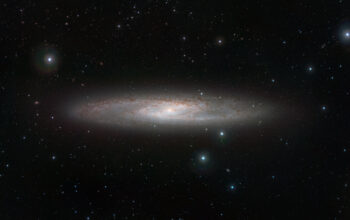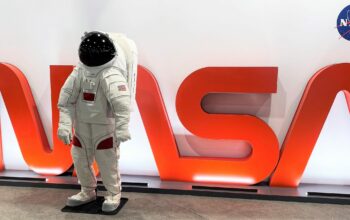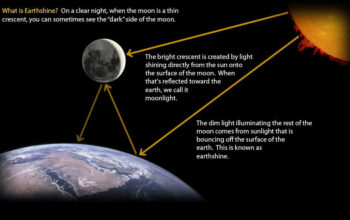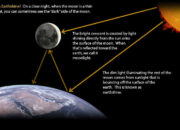In recent years, the intriguing analogy between black holes and laser mechanisms has spurred novel explorations within the realms of gravitational physics and quantum field theory. The concept that a black hole could mimic the behavior of a laser invites an array of critical reflections, notably regarding how the intersection of light, gravity, and quantum mechanics informs our understanding of astrophysical phenomena. This juxtaposition elicits a playful yet profound question: can we utilize the properties of black holes to harness the fundamental principles of light emission, akin to a laser? Moreover, does this analogous behavior present a challenge to our pre-existing paradigms about spatial-temporal cohesion in the cosmos?
To embark on this discourse, it is essential to grasp the mechanisms underlying both lasers and black holes. A laser operates on the principle of stimulated emission, wherein photons interact with excited atoms, resulting in the amplification of coherent light. Conversely, a black hole represents a region in spacetime with a gravitational pull so immense that not even light can escape its grasp. At the event horizon, the boundary delineating the observable from the unobservable, we encounter peculiar quantum effects that blur the lines of classical physics. Herein lies the crux of our inquiry—both systems creatively manipulate light, albeit in starkly contrasting manners.
The notion of a black hole acting as a laser originates from theoretical models that posit the existence of black hole analogues in a laboratory setting. Researchers have developed experiments employing superfluid helium or optical fibers to create systems that emulate the gravitational effects observed near black holes. Such models produce phenomena analogous to Hawking radiation—quantum fluctuations that allow particles to escape a black hole’s influence. In these simulations, the conditions mirror stimulated emission where radiation is amplified, suggesting that certain characteristics of black holes correspond remarkably to traditional laser dynamics.
Significantly, light in the vicinity of a black hole can exhibit behaviors akin to laser light. This assertion brings forth the theoretical construct of the “black hole laser,” which posits that if we can establish a mechanism for producing coherent radiation using the gravitational field of a black hole, we may advance to a point where we can fundamentally alter the way we perceive energy extraction from such cosmic entities. This entitles a reinterpretation of our gravitational narratives—a prospect that bears profound implications for astrophysics and theoretical physics alike.
Yet, while the prospect of harnessing black holes as sources of coherent light is exhilarating, it is not without its challenges. One must contend with the intrinsic instability associated with extreme gravitational fields and the chaotic nature of quantum interactions. For instance, when considering the potential for converting energy from a black hole’s gravitational influence into usable light, one must address how to stabilize such processes against the background of gravitational waves and other resonant phenomena that emerge from a black hole’s dynamic environment. Does the random nature of quantum fluctuation afford us any level of predictability? Or does it present an insurmountable barrier to consistent light emission?
Moreover, this discussion invites further examination of the thermodynamic implications associated with such energy conversion. The enthused concept of “black hole lasers” challenges traditional notions of entropy and information conservation, offering intriguing avenues for elucidating the entropic landscape of spacetime. According to the laws of thermodynamics, a black hole’s entropy is proportional to its surface area, leading to questions about how information escapes this entropy barrier. By probing deeper into these relationships, we may uncover profound insights into the nature of gravity and quantum mechanics, as they orchestrate phenomena at extraordinary scales.
Delving into experimental avenues, researchers are tasked with the challenge of realizing these theoretical constructs. Quantum optics experiments combined with gravitational analogues may pave the way for elucidating behaviors reminiscent of lasers emerging from black holes. Such pursuits could bridge the gap between fundamental physics and applied technologies, igniting a new era of advanced photonic systems. However, the inherent complexities of meshing quantum field dynamics within curved spacetime require robust theoretical frameworks and innovative experimental designs.
As we explore these parallels, one is compelled to ponder the implications for future scientific advancements. If black holes can indeed be seen as laser-like entities, what doors could this open for harnessing the energy contained within these colossal structures? Could we envision future spacecraft operating under the gravitational influence of black holes, utilizing captured energy in propulsion methods hitherto unimagined? These speculations raise inquiries that tantalize both theoretical and practical domains of inquiry.
In conclusion, the analogy of black holes functioning as lasers fosters a fertile space for intellectual exploration at the intersection of light, gravity, and quantum theory. It invites us to reconsider the paradigms surrounding our understanding of energy, causality, and the nature of existence. The challenges posed by this analogy—ranging from stability and predictability to thermodynamic constraints—demand rigorous investigation as we seek to unravel the complexities of the cosmos. With each insight gained, we inevitably inch closer to understanding not only black holes but the very fabric of reality itself, as we endeavor to bridge the vast distances between theory and experimental validation.










